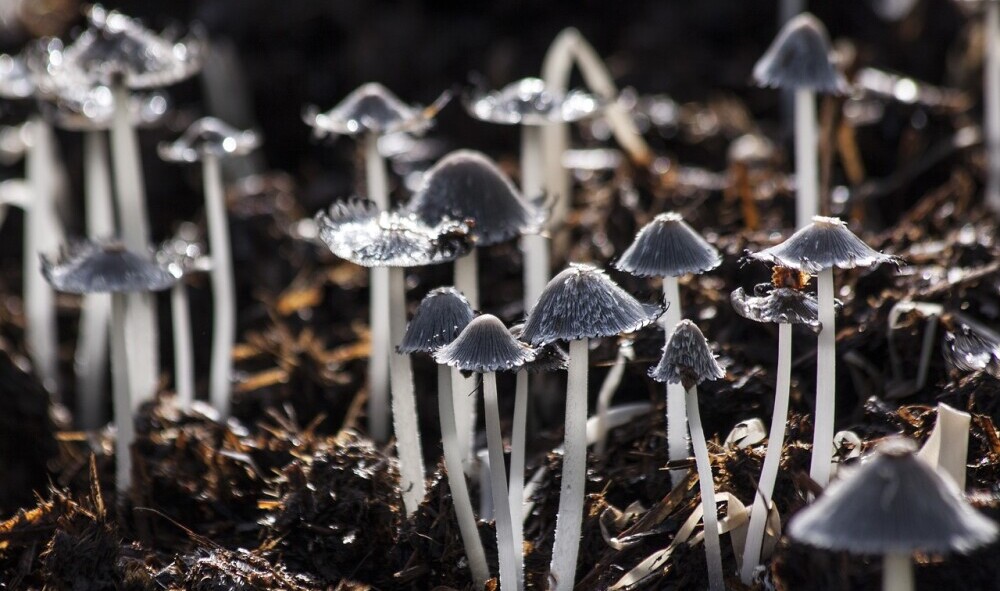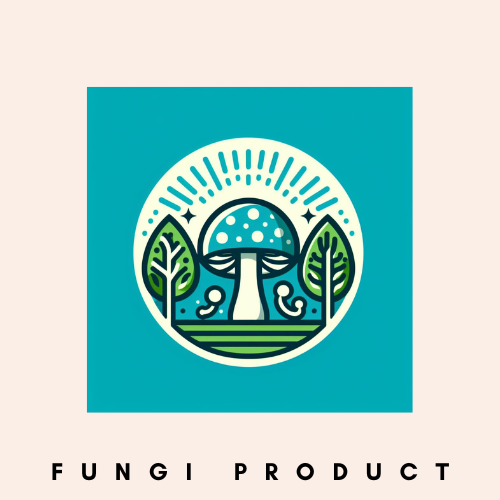Sustainable fungi products have been gaining a lot of attention recently, thanks to their potential to help us tackle environmental challenges. These include alternative materials for packaging, construction, and even textiles that are friendlier to our planet compared to traditional options. But what exactly are these products, and why should we care about them?
Sustainable fungi products come from fungi, of course, and more specifically, from mycelium. It’s the root-like structure of a fungus that can be grown and shaped into various materials. These materials have surprising properties, like being biodegradable, durable, and insulating. They’re popping up in more places and applications each day, showing just how versatile and helpful they can be.
One of the main reasons these products are gaining traction is their positive environmental impact. Traditional manufacturing processes often involve the use of non-renewable resources, generate pollution, and create waste that takes forever to decompose. In contrast, fungi can be grown using agricultural waste and other low-value organic materials, requiring much less energy and producing minimal waste. Plus, when fungi-based products reach the end of their lifecycle, they break down naturally, returning nutrients to the soil.
Sustainable fungi products aren’t limited to a single industry. They can be adapted for various uses – from biodegradable packaging that replaces harmful plastics to mycelium-based bricks for eco-friendly construction. There are even fungi-derived fabrics making waves in the fashion industry. Each of these applications showcases the potential of fungi to revolutionize how we think about materials and sustainability.
This growing popularity is part of a larger movement towards finding more eco-friendly solutions across industries. As more people become aware of the impact their consumption has on the environment, demand for sustainable options is rising. With their remarkable versatility and environmental benefits, fungi products are poised to play a significant role in this shift.

No one could imagine that Fungi would become source of many sustainable products …
The Science Behind Fungi as a Sustainable Resource
Understanding the science behind fungi is key to appreciating their potential as a sustainable resource. Mycology, the study of fungi, reveals how organisms like mushrooms, molds, and yeasts contribute to various ecosystems. Their most fascinating element, the mycelium, is often the hidden hero in sustainability efforts. Mycelium networks spread underground and play a crucial role in nutrient cycling, soil formation, and plant health.
Mycelium is incredibly efficient at breaking down organic matter and returning essential nutrients to the soil. This process is not just vital for the health of forests and other natural habitats, but also for agricultural lands where soil health is key to crop productivity. When we harness mycelium’s natural capabilities in product development, we align with these sustainable cycles.
Another aspect of fungi that makes them uniquely valuable is their ability to grow on a wide range of substrates, including agricultural waste and by-products. This means that fungi can repurpose what would otherwise be discarded, turning waste into valuable materials. Compared to traditional manufacturing processes, which rely on finite resources and often produce harmful emissions, fungi-based production is a breath of fresh air.
The lifecycle of fungi is another reason they fit so well with sustainability goals. Fungi reproduce through spores, which can spread quickly and grow under the right conditions. This means that fungi can be cultivated relatively easily and with minimal resources. The rapid growth rate of fungi also allows for faster cycles of product development and turnover, making them an efficient choice for sustainable manufacturing.
Lastly, fungi support biodiversity, which is crucial for healthy ecosystems. Fungi form symbiotic relationships with plants through mycorrhizal networks, which enhance plant nutrient uptake and resilience against environmental stress. These partnerships exemplify the interconnectedness of life and the importance of maintaining biological diversity.
By understanding and harnessing these natural processes, we can develop products that are not only sustainable but also support broader environmental health. Embracing fungi as a resource is a step towards creating more eco-friendly and sustainable systems that benefit us all.
Innovative Fungi Products Revolutionizing Industries
Sustainable fungi products are making waves across a variety of industries, offering innovative alternatives to traditional materials. One notable area of impact is packaging. With the alarming increase in plastic waste, companies are rethinking their packaging solutions, turning to mycelium-based materials. These fungi-derived packaging options are not only biodegradable but also efficient and sturdy, presenting a viable alternative to plastics.
The construction industry stands to gain significantly from fungi products as well. Mycelium bricks and insulation materials offer impressive benefits, such as fire resistance, thermal insulation, and biodegradability. These materials can reduce the carbon footprint of buildings while ensuring safety and efficiency. Moreover, their production exploits waste products from agriculture, which further underscores their sustainability.
In the world of fashion, fungi are creating a revolution. Mycelium-based leather, for instance, is gaining popularity as a sustainable alternative to animal leather. This material replicates the look and feel of traditional leather but with a fraction of the environmental impact. Additionally, fungi-derived dyes offer a non-toxic, eco-friendly option for textile coloring, bypassing the chemical-intensive processes usually involved in dyeing fabrics.
Beyond these applications, fungi products are extending into areas like furniture, automotive interiors, and even electronics. For example, mycelium can be molded into various shapes to create lightweight, durable furniture. In the automotive industry, fungi-based materials are being tested for use in car interiors, offering a renewable alternative to petroleum-based plastics. Even in electronics, researchers are exploring mycelium’s potential as a biodegradable substrate for circuit boards.
These innovations demonstrate the versatility and broad applicability of fungi products, proving that they are more than just a niche option. By integrating fungi-based materials into various sectors, we can reduce environmental impact, promote sustainability, and discover the full potential of these amazing organisms. The possibilities are truly endless.

More and more car brands chose the fungi-based leather for their interior
Consumer Choices and the Impact on Sustainable Fungi Markets
Consumers play a crucial role in driving the market for sustainable fungi products. As awareness of environmental issues grows, so does the demand for eco-friendly alternatives. People are seeking out products that not only meet their needs but also align with their values. This shift in consumer preferences is encouraging companies to innovate and expand their sustainable offerings.
One way consumers can make an impact is by paying attention to labels and certifications when shopping. Opting for products that clearly indicate they are made from fungi or mycelium can support businesses dedicated to sustainable practices. Certifications from reputable organizations can provide an added layer of trust, ensuring that the products meet certain environmental and ethical standards.
Another approach is to look into the background of brands and their sustainability initiatives. Companies that are transparent about their sourcing and production processes are typically more trustworthy. By supporting brands that prioritize sustainable fungi products, consumers can help drive the market towards more responsible practices.
It’s also vital to spread the word about these innovative products. Sharing information through social media, word-of-mouth, or community groups can raise awareness and inspire others to make sustainable choices. The ripple effect of informed consumerism can significantly boost demand and encourage more companies to adopt eco-friendly practices.
As fungi-based products become more mainstream, their availability and affordability will likely improve. This growing market can lead to economies of scale, making sustainable options more accessible to a wider audience. Every purchase decision made with sustainability in mind contributes to this positive trend, reinforcing the importance of consumer choices in the broader push towards a sustainable future.
Challenges and Opportunities in the Sustainable Fungi Sector
The sustainable fungi sector, while promising, faces several challenges that could impact its growth. One major obstacle is scaling up production. Fungi cultivation, especially on a large scale, requires specific conditions and infrastructure, which can be costly and complex. Researchers and companies are constantly working to streamline these processes, but balancing efficiency with sustainability remains a challenge.
Economic factors also play a significant role. While the initial investment in fungi-based products may be high, the long-term benefits often outweigh the costs. However, convincing stakeholders of this can be tough. Educating investors and consumers about the economic viability of sustainable fungi products is crucial for driving investment and adoption.
Environmental factors can’t be overlooked either. While fungi themselves are eco-friendly, their growth mediums and environments must be carefully managed to ensure they remain sustainable. This means constantly innovating to find new ways to use by-products and waste materials efficiently, minimizing any negative environmental impact.
Despite these challenges, the sector is ripe with opportunities. Collaborative efforts between researchers, businesses, and policymakers can pave the way for advancements. By sharing knowledge and resources, we can overcome some of the hurdles that currently limit widespread adoption.
Research and development are at the heart of unlocking the full potential of fungi. Continuous innovation in cultivation techniques, product applications, and sustainable practices can open up new possibilities. For instance, advancements in mycology could lead to more efficient methods of growing fungi or new ways to utilize mycelium in different industries.
The sustainable fungi sector offers immense potential for growth and innovation. By addressing the challenges head-on and capitalizing on opportunities, we can pave the way for a more sustainable future. It’s a collaborative effort that requires input from all stakeholders, but the benefits make it a worthwhile endeavor.

Embracing a Fungal Future: What Lies Ahead
Looking ahead, the future of sustainable fungi products is bright and full of potential. The expansion of fungi-based solutions is likely to accelerate as more industries recognize the environmental and economic benefits they offer. From packaging to construction, and beyond, the applications are vast and growing.
Educational initiatives will play a critical role in this expansion. As more people, including consumers, students, and professionals, learn about the benefits of fungi, the demand and support for these products will rise. Incorporating fungi studies into educational curricula can foster a new generation of innovators who are equipped to push the boundaries of what fungi can achieve.
Advocacy and policy development are equally important. Supportive policies that encourage sustainable practices and provide incentives for companies to adopt fungi-based solutions can drive significant progress. Collaboration between scientists, businesses, and lawmakers can help create a regulatory environment that supports innovation and sustainability.
Technological advancements will continue to shape the fungi sector. Improved cultivation techniques, novel applications, and enhanced product designs will make fungi-based products even more efficient and versatile. Keeping an eye on technological trends and breakthroughs will be essential for anyone involved in this field.
The relationship between humans and fungi is one of symbiosis. Our ability to harness the power of fungi for sustainable development hinges on mutual respect and understanding of these organisms. As we continue to explore and innovate, we must ensure that our practices honor the natural systems fungi are part of.
The pathway to a sustainable future is intertwined with the potential of fungi. By embracing these unique organisms and investing in their development, we can address some of the most pressing environmental challenges we face today. It’s an exciting journey with endless possibilities, and one that promises considerable benefits for our planet and future generations.

André Raymond
